The founding story
One day I was talking to my mom about our cycling trips, and she told me the following story:
A year ago they had gone on a cycling trip in eastern washington with some of their friends. They had so much fun that they came home and told all their friends about it. Then, multiple of their friends proceeded to book the exact same vacation down to the same hotels, and eating the same food at the same restaurant. Not only this, but when I asked how my parents heard of this vacation, they told me it was a recommendation from another one of their friends.
After spending so much time planning vacations myself, I wondered why I hadn’t taken inspiration from my friends’ vacations. If my friends and I have similar taste, wouldn’t we enjoy similar vacations?
After thinking it over, I realized that there are no social media platforms made with itinerary sharing in mind. I decided to build one.
Initial Concepts
We know that:
- People generally spend a lot of time planning their vacations
- Friends have a lot in common and share similar tastes
- People like a small number of curated recommendations
The Idea
A social sharing platform for vacations, trips, and adventures.
A vacation building platform, with recommendations provided by user generated itinerary items and ranked by deep learning.
Pitch Deck
It’s hard to communicate via text but there’s a lot of commentary missing from the slide deck, including the anecdote shared earlier. I have found that this approach is the most distinguishing aspect of a good pitch. It is important to have a visually interesting slide deck, while leaving most of the content for you to tell orally, keeping the focus of the conversation on yourself and not the slides.
I presented this pitch deck at a University of Washington startup event, and it crushed. I wish I’d recorded it, but unfortunately I did not 😔.
Starting with a narrow userbase
One of the things I learned throughout this process is that gathering users is easier if you start by focusing on a small but enthusiastic community that will band together around your product. For wanderlust, this community was the cycling community. As a fellow cyclist myself I know how much this community loves to both travel, and share about their rides. This combination made the cycling community a perfect pilot to build a strong userbase before trying to go mainstream.
The Prototype
The Stack
The app is built with Expo, which is an amazing framework extending React Native. This then uses the serverless backend hosted on vercel with NextJS also providing the frontend. I also used Planetscale for the database (but no longer recommend it to hobby users because they discontinued their free tier), and used Clerk for user management and authentication.
Initial MVP
- A user can have trips and futures
- Trips are vacations you went on, and futures are your vacation goals
- Both trips and futures can be public
- You can turn a future into a trip, and vice versa
User Flow
You start on the homepage where you can view other people’s vacations at a glance.
You can then click on someone’s trip from the homepage to view their full itinerary.
If you like their trip, you can copy their trip to your “futures” tab. You can also build a future from scratch.
You can then edit the itinerary by swapping itinerary items with other recommended items, or creating new items yourself.
Then, after booking and going on your new curated vacation, you can upload photos and post the vacation to your public profile with just a few clicks!
Now another user can be inspired by your vacation, just as you were.
Homepage view, and trip view

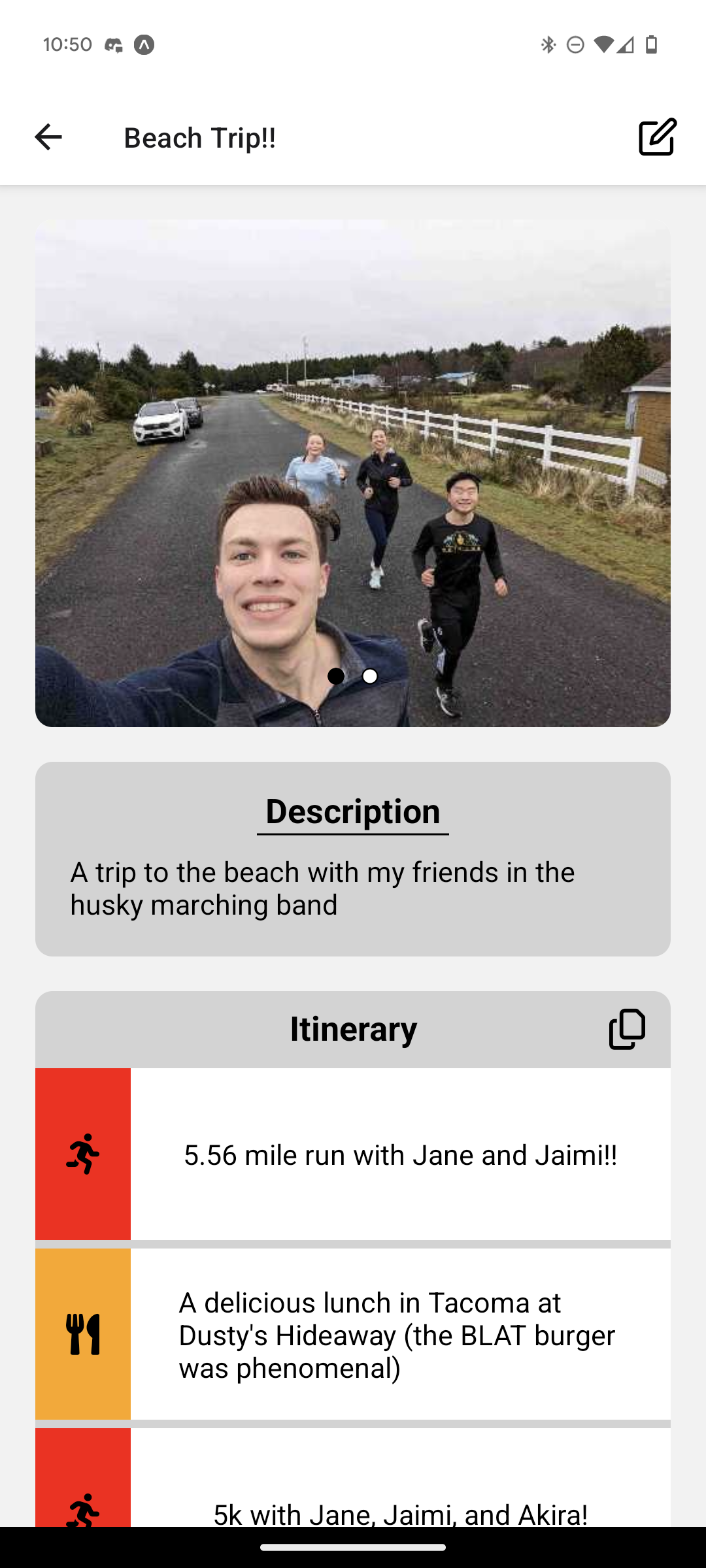
The homepage is a list of recommended user-generated trips that you can view and copy. Then you can click into any trip, and are greeted with a trip page similar to the one above.
UI for editing a trip, and editing a specific activity in a trip
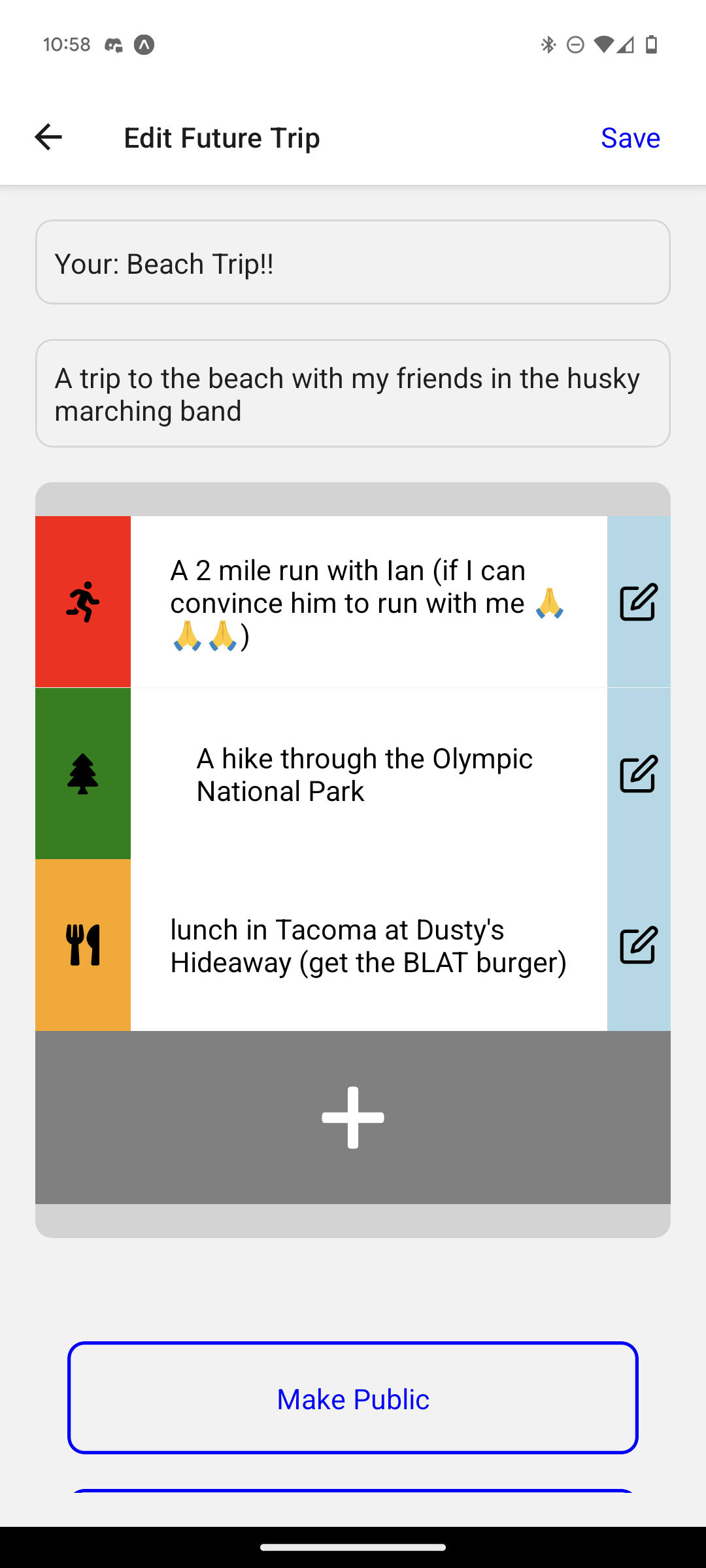
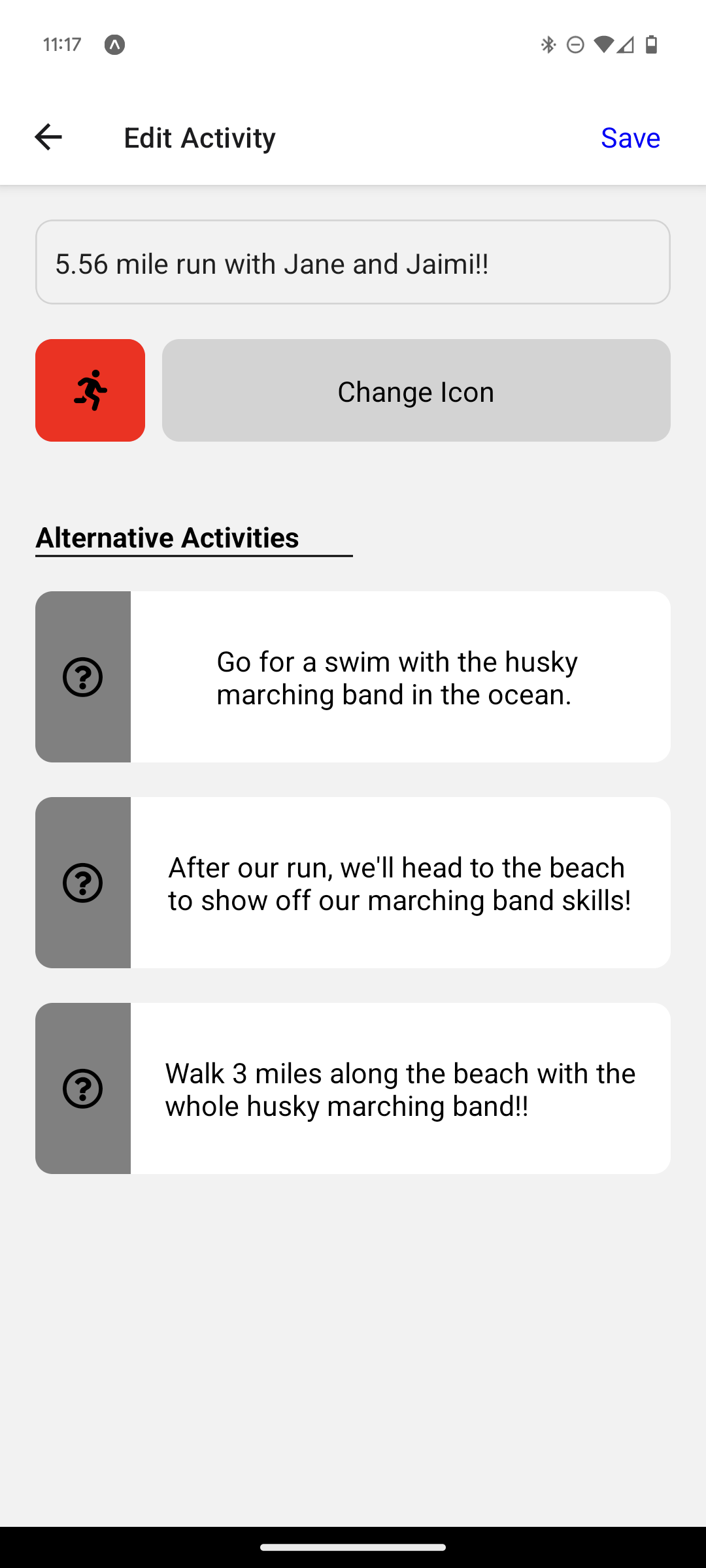
There are then pages for editing a trip where you can drag itinerary items to rearrange them, or click to edit an itinerary item.
When editing an itinerary item you are greeted with both user-generated itinerary item recommendations, as well as some AI-generated items. The user-generated itinerary item recommendations were never implemented, but you can view the (silly) AI-generated items above. The AI used was an early model, and therefore did not produce usable results.
User trips and futures page
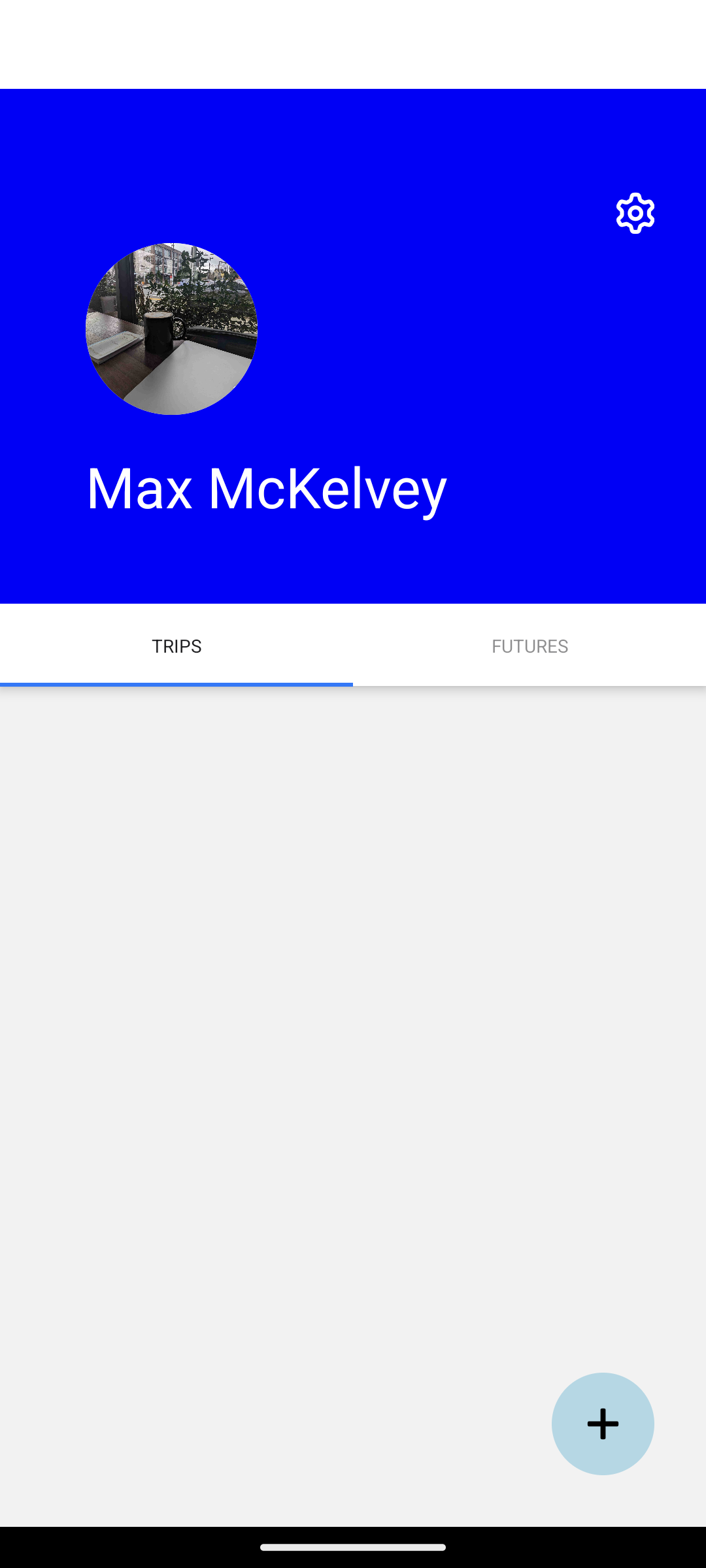
Working Strava and Ride with GPS embeds
Because I wanted to start by targeting the cycling community, I knew that I had to have built-in activity embeddings. Most cyclists I know use either Strava or Ride with GPS, so one of the activity options is a map embedding.
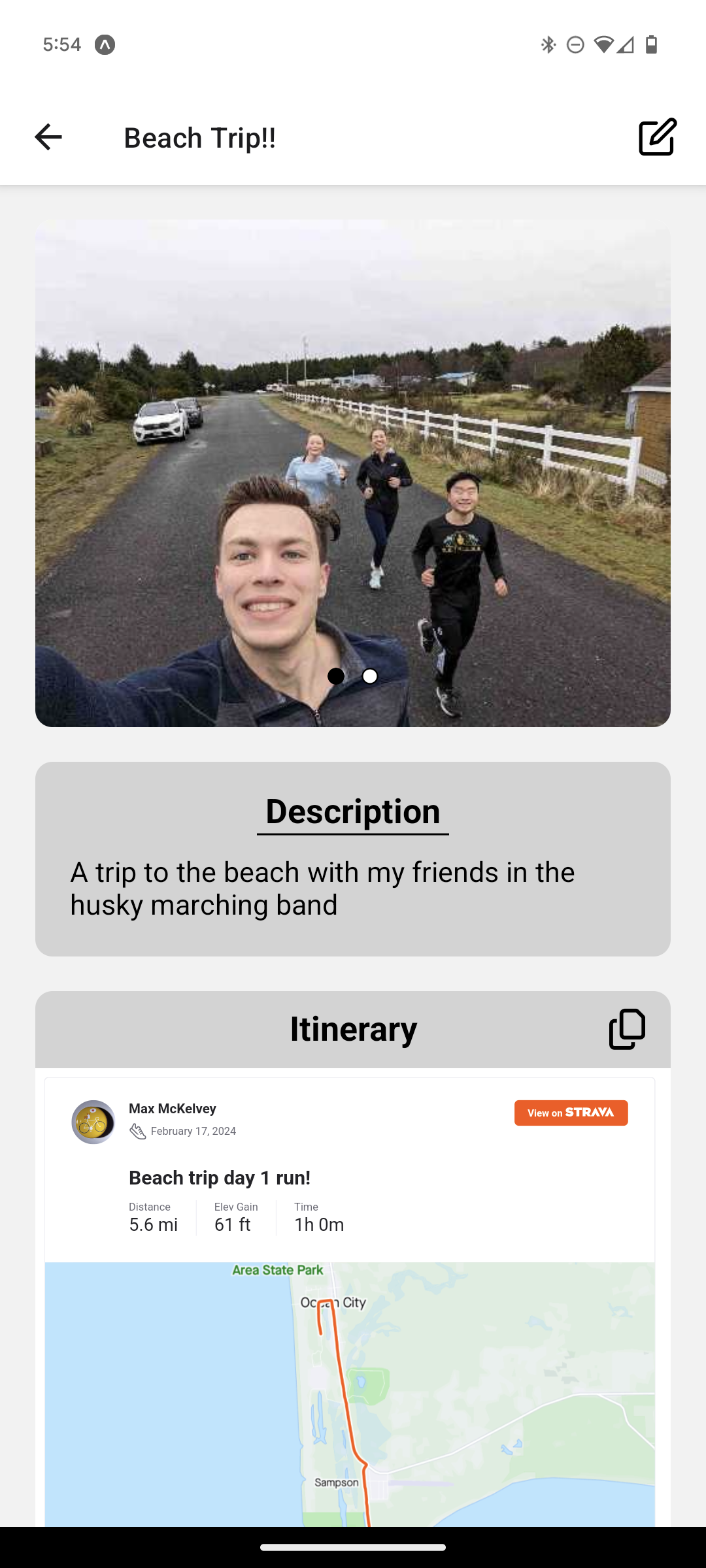
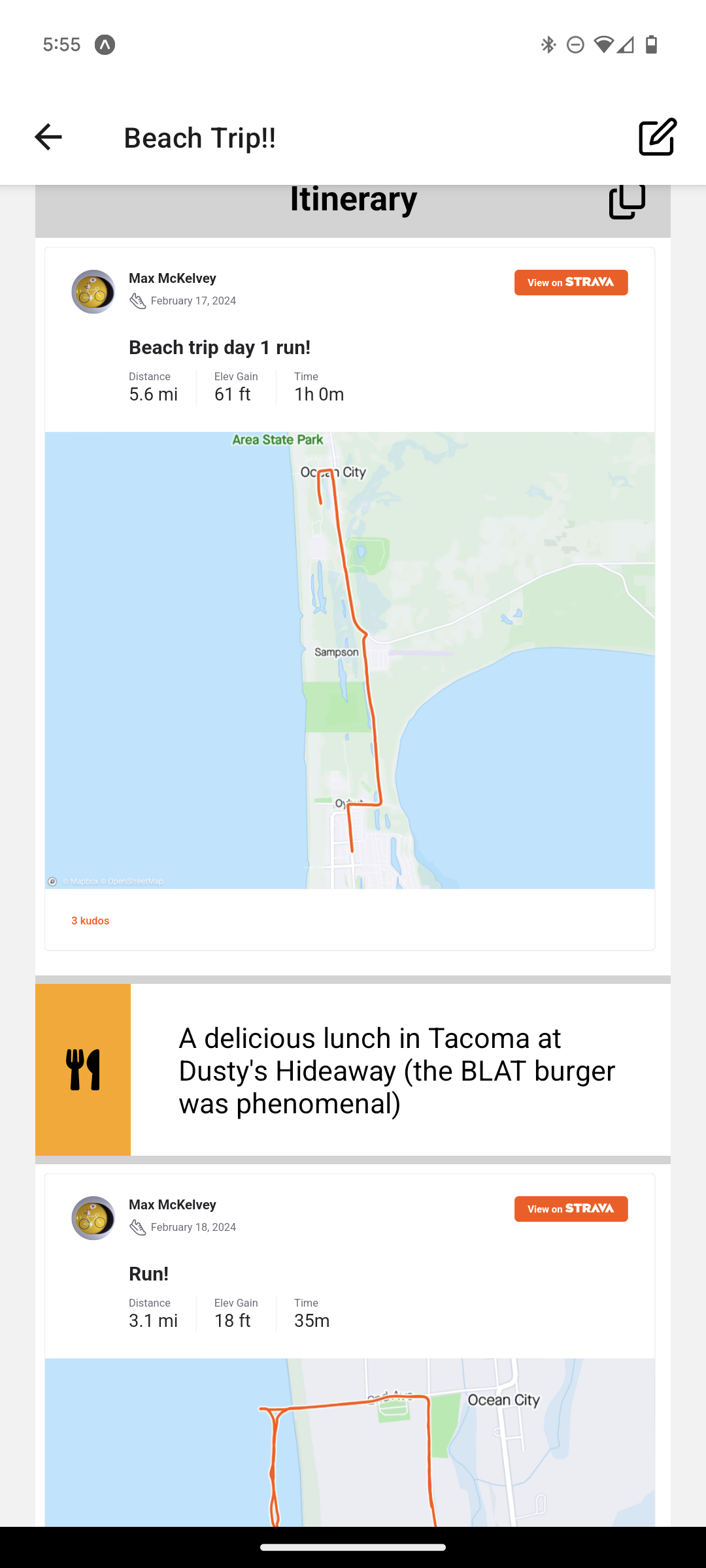
The above screenshots show one of the vacations I went on, with both descriptive itinerary items as well as activity embeddings that show the runs that I went on.
Dead on arrival
Unfortunately, there were two major problems with this concept.
- Generative AI has bypassed the need for user generated itinerary items
- Building a userbase is hard
#1 - Generative AI
- I’ve seen a few app concepts where generative AI is used to generate full itineraries within an app
- You can use ChatGPT or other generative AI chatbots to interactively generate text itineraries
Because of these two options, it is increasingly easy to build a curated vacation itinerary based on your interests and budget, making it harder to scale with a desirable product.
#2 - Building a userbase is hard
The main feature is the deep learning recommendations of user generated itinerary items, but this feature can’t exist before a large number of users both sign up for the platform and post vacations with detailed itineraries.
This unfortunately is an impossible challenge without finding another draw for users to start posting on the platform, and I couldn’t afford to get users myself.
A resounding success
While this may be a silly conclusion after the last section, this is the honest truth. Throughout this experience I furthered my software development skills and learned a few key lessons.
- I built a fully functional MVP, by myself, in just over two months
- I can effectively and convincingly pitch a startup idea
- While I should have quit earlier, I was able to evaluate my idea against the current market, and cut my losses before going further
I’m incredibly proud of both the things I built and the connections I made throughout this experience.
While I’m shelving the wanderlust project, I’m grateful that the lessons I’ve learned will make my next startup idea better and more successful.